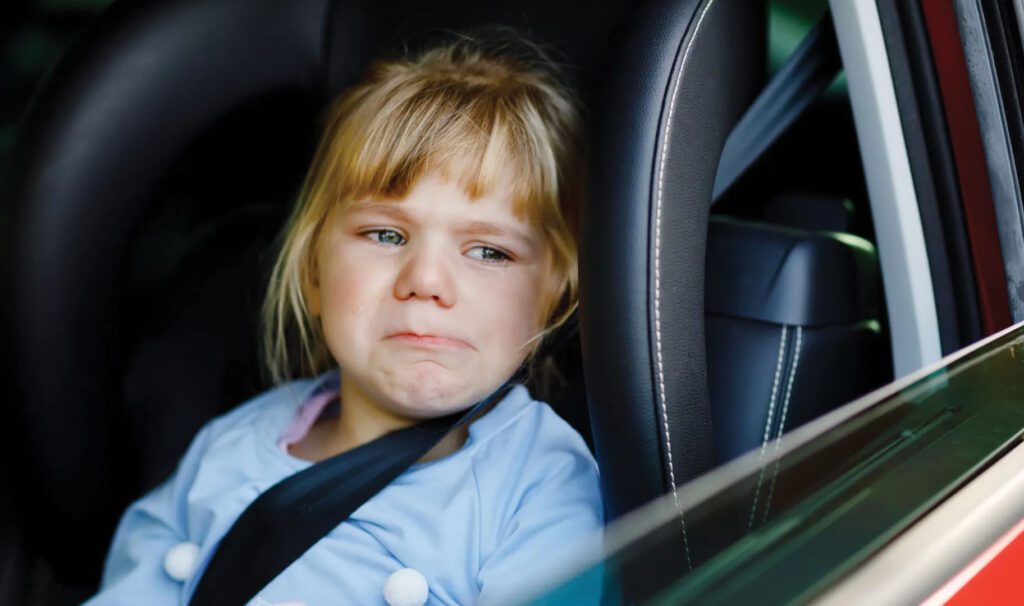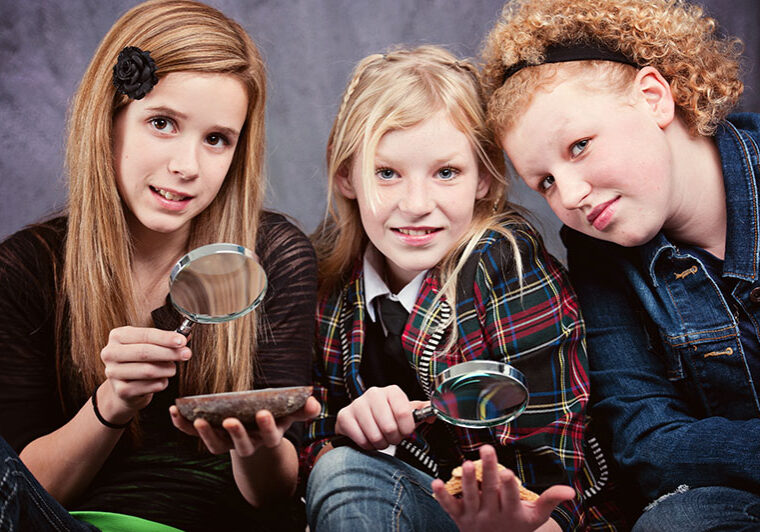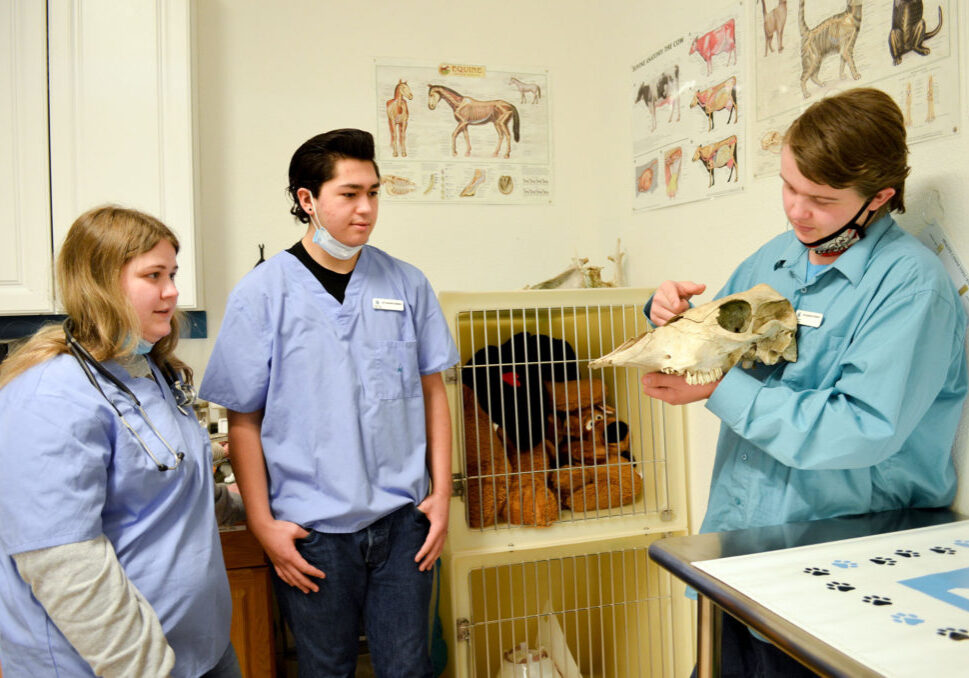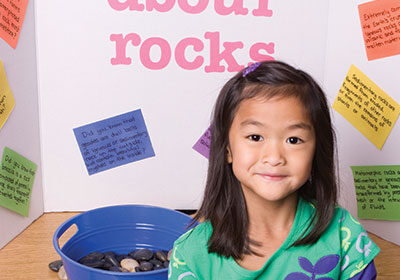More Goldfish!” my 5-year-old demands.
I summon all my patience.
“Can you try that again?”
“I’m hungry!”
I take a long blink. “Honey? Can you—”
Her face is still beet red, but her body has relaxed. She takes a deep breath, then slowly blows the air through her pursed lips. This is the “birthday cake” breathing she learned in kindergarten.
“Mom, can I please have more Goldfish?”
My daughter attends public school in Boulder, Colorado, where her teacher is one of a handful of educators integrating social and emotional learning (SEL) into the classroom. SEL is based on five core competencies — self-awareness, self-management, social awareness, relationship skills and responsible decision-making. The Boulder Valley School District (BVSD) board recently approved a grant to fund the investigation of SEL Competencies, with the goal of creating a systemwide approach to SEL. That means more children will be learning how to understand and manage their emotions, set goals, build healthy relationships, make good decisions and have empathy, according to the Collaborative for Academic, Social and Emotional Learning.

A foundation for happiness and success
Samantha Messier, assistant superintendent of instructional services and equity for BVSD, says the district’s interest in SEL stemmed from an expanding awareness of how deeply students’ social and emotional abilities can affect their academic success. A 2011 meta-analysis showed students who participated in school-based SEL demonstrated significant strides in social and emotional skills and behaviors, as well as improved academic performance.
A 2017 study showed that children who engaged in school-based SEL also showed higher graduation rates and safer sexual behavior, even 18 years post-intervention. Messier hopes SEL will give BVSD students a foundation for happy and successful lives. “I believe that if we can accomplish [that], we will be preparing our students to not only have successful careers but to make a meaningful, positive impact on the world around them.”
Building social emotional skills at home
While some school districts are starting to adopt SEL, it’s not the norm. If your child’s school isn’t including SEL in the curriculum, Jennifer Miller, an SEL expert, offers tips for parents who want to help their children build these skills at home.
Create a plan. Miller recommends creating a Family Emotional Safety Plan so when emotional disaster strikes, you’re ready. It can be as simple as “When mom is angry, she’ll say, ‘I need five minutes,’ and then she’ll go in her room and shut the door while she cools down.” Explaining the plan in advance precludes your child from anxiously wondering, “Why is she leaving me?’ compounding [their] upset with fear,” says Miller. Additionally, it highlights the importance of self-awareness for both children and parents.
Make a pledge. While family arguments are natural, they’re not always healthy. According to Miller, data supports the effectiveness of specific types of fighting. While certain words, attitudes and actions can leave emotional scars, others actually strengthen relationships. Miller’s “Fighting Fair Family Pledge” sets boundaries on language and actions to avoid (e.g., criticizing, blaming, name-calling) while offering effective alternatives (like taking responsibility and focusing on solutions). She says even if you only adopt this pledge with your spouse or partner, your kids will still benefit. “Children learn most and best from modeling, so even if we only adopt boundaries for fighting with our partner, we can watch the ripple effect throughout our family as children begin to use similar strategies.”
Use challenges as teaching opportunities. Miller says when faced with parenting challenges, it’s crucial to ask, “What skill does my child need to learn?” While being clear on what behaviors are unacceptable, we must teach our kids how to engage in the behaviors we do want to see. For example, if your child continually takes her younger sister’s doll, instead of repeatedly telling her not to, Miller encourages parents to use this situation as a teachable moment. “You might say, ‘You really want to play with your sister’s doll. Let’s see if there are ways we can play that keep everyone happy and also gives you a chance with the doll. Hmm, what could we do?!’ Get your child involved.” You can also have your child teach the behavior to a toy to make the lesson more fun. Miller recommends giving positive reinforcement when your child approaches a challenging situation in a constructive way. “Your specific recognition can go a long way toward promoting new positive choices.”
Integrating social emotional learning into daily life
As a parent, I see the benefits of SEL daily. I see it when my daughter chooses deep breaths over screaming when I brush her hair, when she asks her little sister to take turns and when she tells herself “I can do it” before attempting the monkey bars. I see it when she says, “Oops. I made a mistake. I’ll take a deep breath and try again.”
In my daughter’s class, SEL isn’t a separate lesson. Her teacher, Donna Young, infuses it into the classroom culture, which emphasizes relationships. “We are, first and foremost, a school family,” says Young. Every morning, she crouches to make eye contact while greeting each child by name. Intermittently throughout the day the class does calming breathing exercises together. Young strives to model self-regulation; strategically placed sticky notes serve as reminders. When she falls short, she tells her students what she was feeling, what she did and what she’ll do differently next time. “This just reinforces that everyone makes mistakes, all the time, every day and it’s OK.”
SEL skills such as self-regulation and empathy aren’t just beneficial for children. Young wishes she had known about SEL when her kids were growing up. “If I had [then] the knowledge and self-awareness that I have now, I would have parented in a different way. I believe I would have had more compassion for myself and my mistakes as a parent of young children.”
Posted in: Education
Comment Policy: All viewpoints are welcome, but comments should remain relevant. Personal attacks, profanity, and aggressive behavior are not allowed. No spam, advertising, or promoting of products/services. Please, only use your real name and limit the amount of links submitted in your comment.
You Might Also Like...

Siskiyou County Schools Tackle Tobacco
“Eighty-one percent of California teenagers prefer dating non-smokers,” recites Maya, a Butteville Elementary sixth grade student who is rehearsing for one of a series of recorded tobacco awareness ads to […]

“MOM! I Don’t Want to Set Goals!” Talking to Your Teen About Goals
As we leave 2024 behind us and look forward with hope to a bright new year, we begin to set new year’s resolutions, or as they are called the rest […]

Homeschooling Can Build Confidence and Independence While Accelerating Learning
Imagine a world where you stay in your pajamas all day, finish your school assignments before lunchtime and every day is an out-of-school day. Welcome to my young life! After […]

Encouraging Girls In Math & Science
While working at a science museum, I once observed a mother, toting a daughter past exhibits on dinosaurs, oceans and machines, approach an employee. “Where is the stuff for girls?” […]




